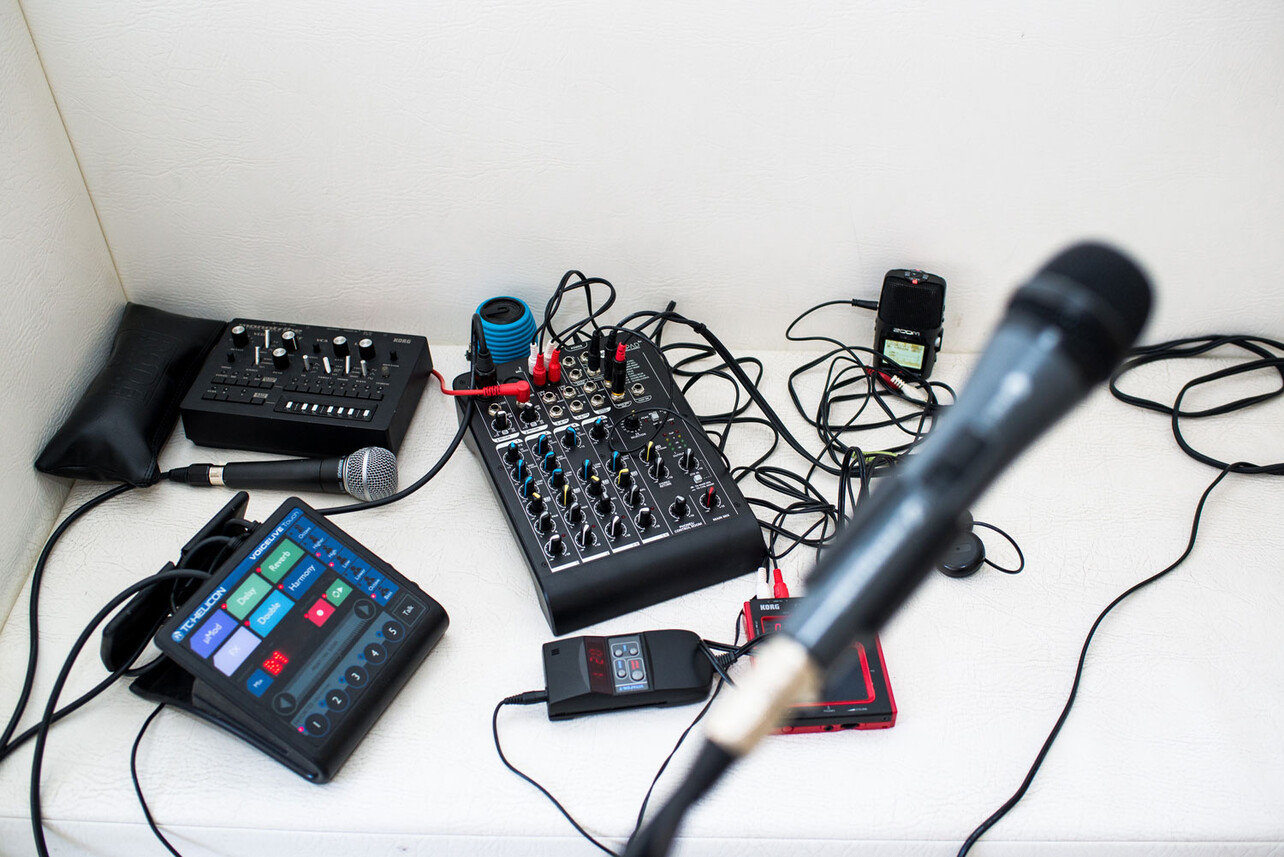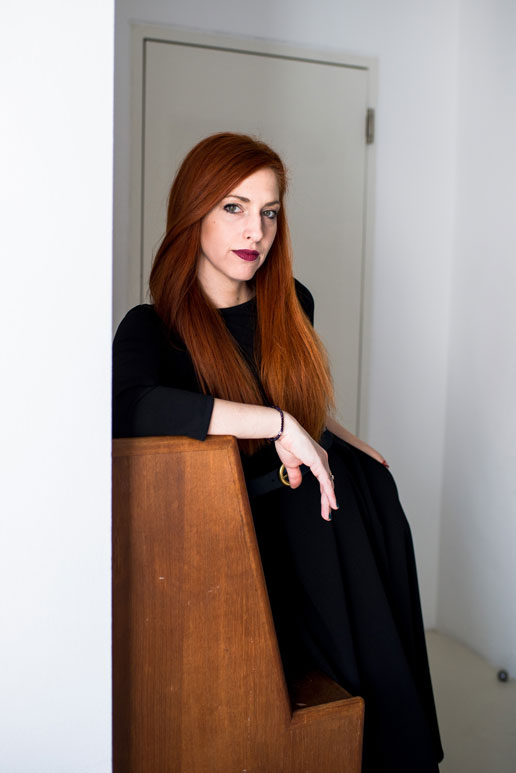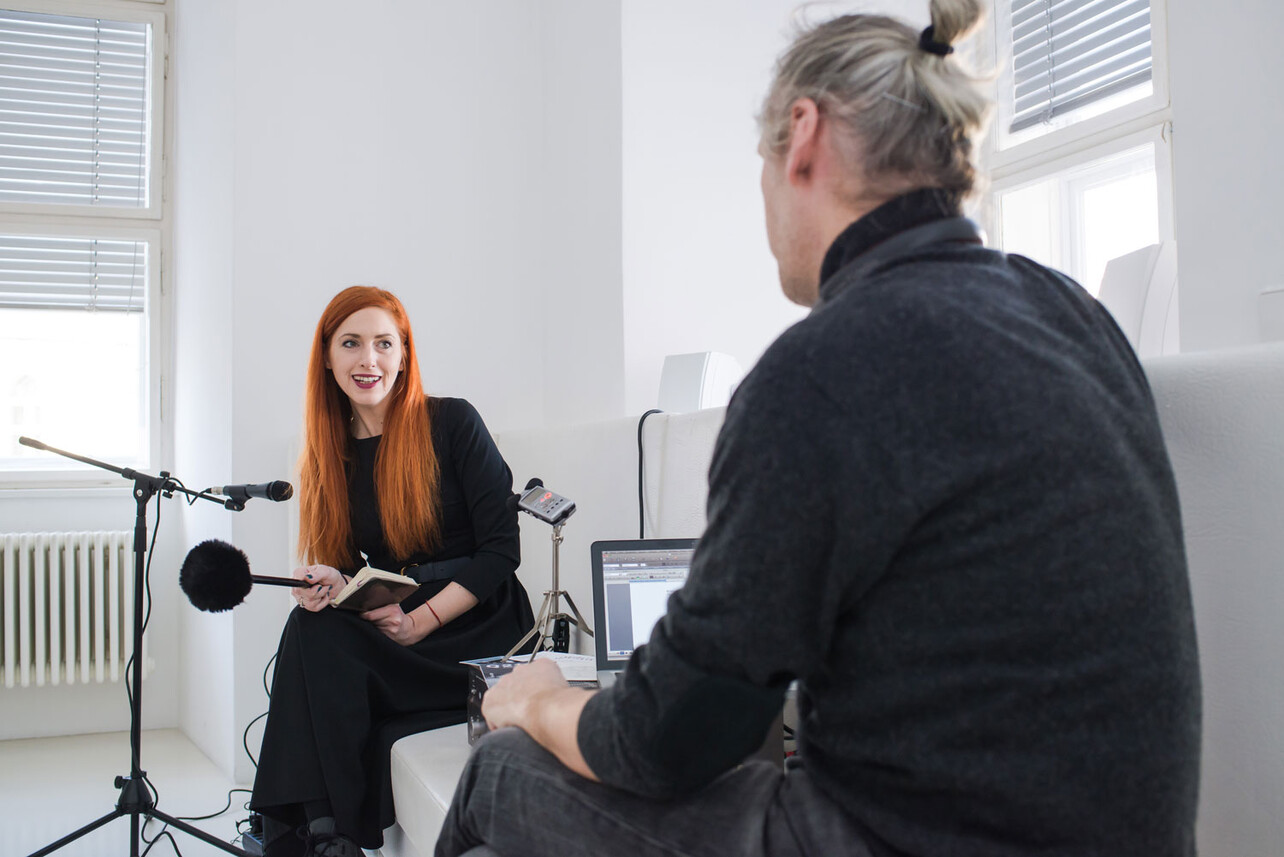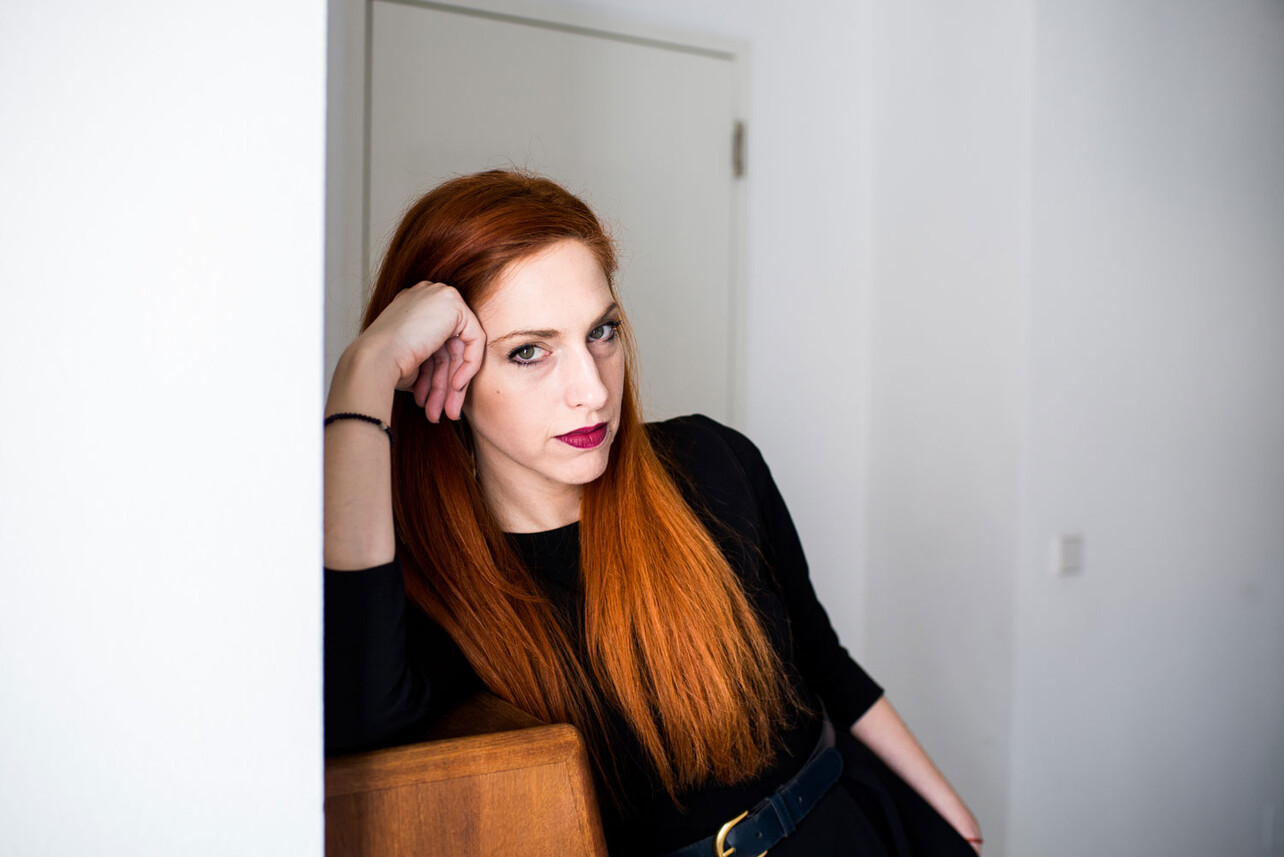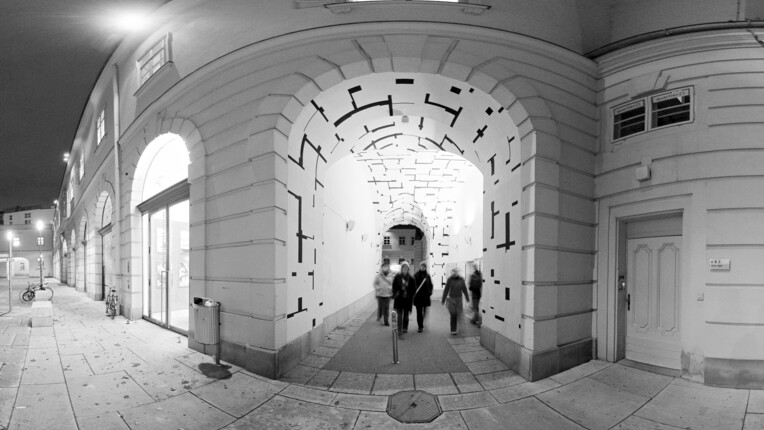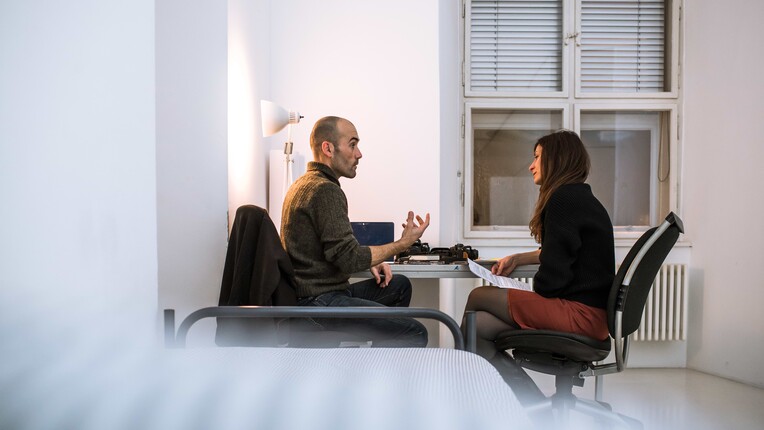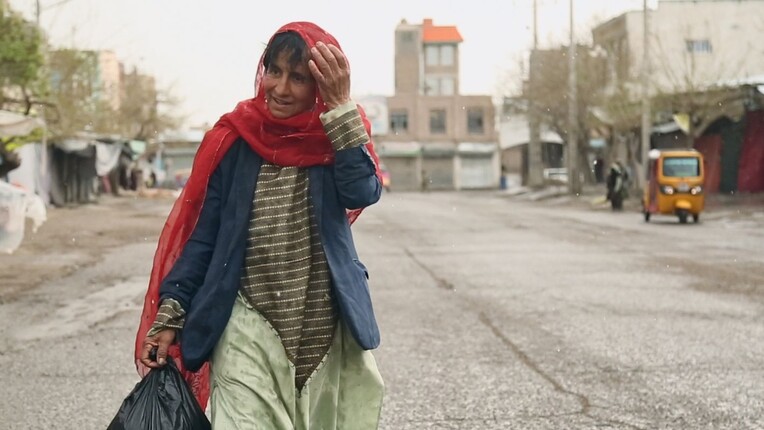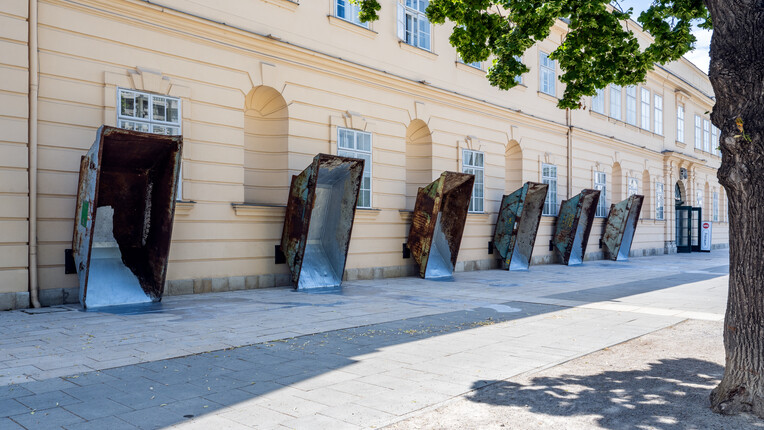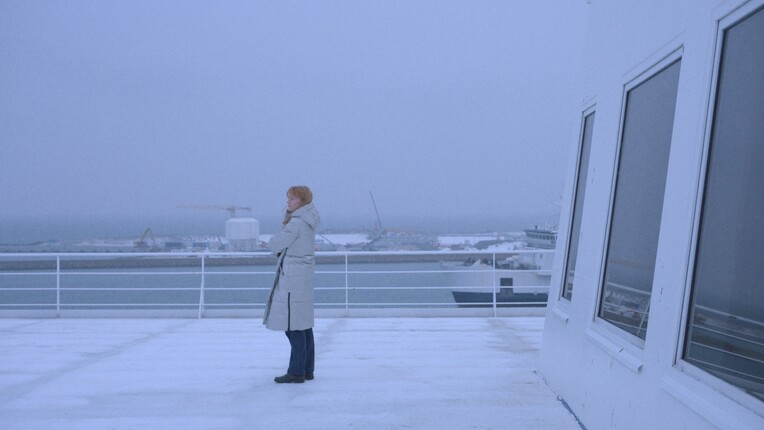
What does it sound like when you trust me?
Bojana S. Knežević was invited by TONSPUR Kunstverein Wien to spend February 2019 as Q21 Artist-in-Residence at MuseumsQuartier Wien.
In conversation with TONSPUR artistic director Georg Weckwerth she discusses her latest projects.
Vienna, Feb 6, 2019
Georg Weckwerth: At the beginning of our talk I would like to ask you some general questions with the request for a short answer. The first question is, what does the “S.” in your name stand for?
Bojana S. Knežević: The “S.” is a matter for your interpretation. Actually it is my middle name, i.e. the name of my father, Slobodan, which means “free (person)”.
What does art mean to you?
This is the hardest question on the list. Art has followed me through my whole life, it is natural for me, because I come from an artistic family. Art is a platform which gives me a wide opportunity to express my inner self and to say something that maybe I could not say from other platforms.
What does sound mean to you?
Sound can mean anything, I perceive sound in the broadest possible way, from really atmospheric sounds that surround us on a daily basis to seriously planned compositions. For me sound is really important and it’s healing.
Have you ever used the term “sound art” for your own work?
Yes! I use it for a project that deals with the concept of polyphony and voice/noise relationship. It is a project I started more than ten years ago and it has changed its name several times, from “THE CHOIR OF 13 BOJANAS” and now to “BOASZ”. My other projects are interdisciplinary ones that always include sound in various ways. These projects are more performative, i.e. they deeply research the practice of performance.
What does chance mean for you, and have you used chance in your own art practice before?
I really appreciate chance events. I define myself as a “performer-recycler”, and for me it is really important to have an experimental approach in my projects and something that will surprise me. So for me this is chance, a chance event, something that will really surprise me during some research or during an event or performance.
The same question about collaboration: how important is it for you to collaborate with other artists and to share thoughts and discuss strategies?
For me collaboration is very important, but also in my artworks that deal with performance. Actually, most of them are participative projects, so for me everybody is an artist and I really have this statement while dealing with many different identities. And with my colleagues of course I really love to collaborate, discuss and share ideas. It is not always so easy, but so far I have had really good experience with collaborations.
And what about trust?
Trust is also part of the issue; it is always part of those kinds of connections and interactions between artists, because it is not always easy to share your ideas with other artists. So it was always tricky, but since I think I am more (artistically) mature now... I think as we become more stable in our practices, then we don’t care anymore, because there is not such a new idea. Trust is also very important in the art world in general, because it is not always so clear when you are dealing with other professions in the art world, you know, when you have agreements with producers, with curators, with other artists, with the guys who are setting up your exhibition for example, it is also important to trust them and it is really important to build some kind of trusting interaction.
For my series with sound works called “TONSPUR for a public space” I use the slogan “Sound without Borders”. Do borders exist in your life and your thinking?
No! They just don’t exist. I actually really love to experiment and I really love to be surprised, as I mentioned in my research, so for me an exciting project is the one that involves this “crossing the edge” or border.
Let’s talk about the project you are working on as TONSPUR-Artist-in-Residence at the Q21 (MuseumsQuartier Wien). “A Chance Encounter” is actually not just a piece by you but by four female artists. What is it about?
“A Chance Encounter” is actually the extension of a project with a similar name called “A Chance Event”, which started in October 2018. „A Chance Encounter“ is actually a blind and deaf collaboration between four artists based on the concept of trust, in a way that we create a multi-channel sound installation without having heard each other’s parts. So in the end it will be something really atmospheric, but this is really experimental.
What is the deeper meaning of the piece and of this very special collaboration?
The deeper meaning is actually connected to your question about trust and my answer that dealt with trust between artists. I think it is really an important question, it is really, I would say, a sensitive one, because collaborating with other artists without knowing what they are going to do is really exciting, but it can also be frightening, because artists can be very critical.
Can you just briefly introduce the other artists and what their contributions will sound like.
I won’t say what their contributions will sound like; that will be audible during the set up, during our installation, from the end of February until the end of April. Katarina Petrović is my artist colleague with whom I already have a long-term project, “Femkanje”, which is art and radio project. Karen Werner is a sound artist and also a radio artist, and Yvette Janine Jackson is also a sound artist and a colleague of Karen Werner’s. Actually I have never personally met Karen and Yvette, and that is really interesting, but this is actually the part of our concept that affected our piece – that we got in touch by chance and started the collaboration.
What does your own contribution to “A Chance Encounter” sound like?
I think there will be more singing than in other projects of mine.
Are there titles for the pieces by all four artists?
Maybe there are some inner titles but not those that will be exposed to the audience.
Have you got an “inner title” for your contribution?
I think I am more in the mood to change it during the process …
How did you come together with the other artists for this production?
This was a chance event (laughing) … since the two of us met last autumn in Vienna and we followed up with the idea that maybe something can be presented in the TONSPUR_passage in Maribor in Slovenia... so at the moment when Karen Werner had her piece there, and she was also announced at the Maribor Computer Arts Festivals, where Katarina Petrović and me were participating as “Femkanje”. So in the end we decided to make a collaborative sound piece, where Katarina and me were participants now as separate artists (not as part of “Femkanje”) and Karen then also invited her friend and colleague Yvette and the collaboration started. We actually had a week for this, and this was really exciting and dynamic. We managed to make the structure of the piece really fast, so in the end it went very well. The Maribor piece was called “A Chance Event (for 4 artists, 8 speakers and 16 questions)”.
How are you communicating with your collaborators at the moment to create the piece for TONSPUR?
Online, we are communicating online. It goes pretty well, usually by writing because there is also a time gap since Karen and Yvette live in the US. So in a way it was always easier for us to do group e-mails. But at the same time it is really good not to use sound when discussing the piece, because these sound parts are really intimate. We didn’t want to unintentionally involve each other in each other’s sound… we didn’t want to destroy the others’ sound inspiration, or whatever …
What about the mixing of the different material? The other artists are not here in Vienna, how can this work, what is the plan?
This is really tricky because the three other artists need to trust me. In a way I have this position of coordinating the whole thing, like a final presentation of the whole thing, and this is also based on trust.
The full title of this TONSPUR piece is “A Chance Encounter (for 4 artists, 8 speakers, 8 images and 16 questions)”. What will be shown visually in the backlit vitrines in the passage gallery?
Well, this is not something I would like to reveal right now, but this will be a surprise… for all of us.
I am curious about the 16 questions. Are they audible in the piece or represented in the wall text?
This is also something I cannot reveal right now, maybe parts … maybe the audience will manage to hear 16 questions in the sound piece, but I cannot guarantee it.
What was the idea about these 16 questions?
When we decided what the topic would be, then we also decided to play with numbers a little, so there are 4 artists and 8 speakers then we wanted double with the 16 questions, so this was some kind of a structure that will guide us through our sound interventions, but in the end this was pretty open and I don’t know if the other collaborators used all of the questions and they don’t know if I did or which questions did I use. So maybe the audience will hear all of the 16 questions or maybe they will hear some of them.
I have an idea, let’s do a chance operation here to write down one of the 16 questions … open your computer, with my eyes closed I will put my finger on the list of questions!
Oh, that is not possible, because it is not possible to see the list.
Why?
Because this is part of the concept.
OK, then I will have to improvise, so please tell me your favourite question.
My favourite question for today for our interview is “What does it sound like when you trust me?”
Is that a question from the list of the 16 questions or a new question?
That is a question from the list.
Dear Bojana Knežević, thanks a lot for the talk!
